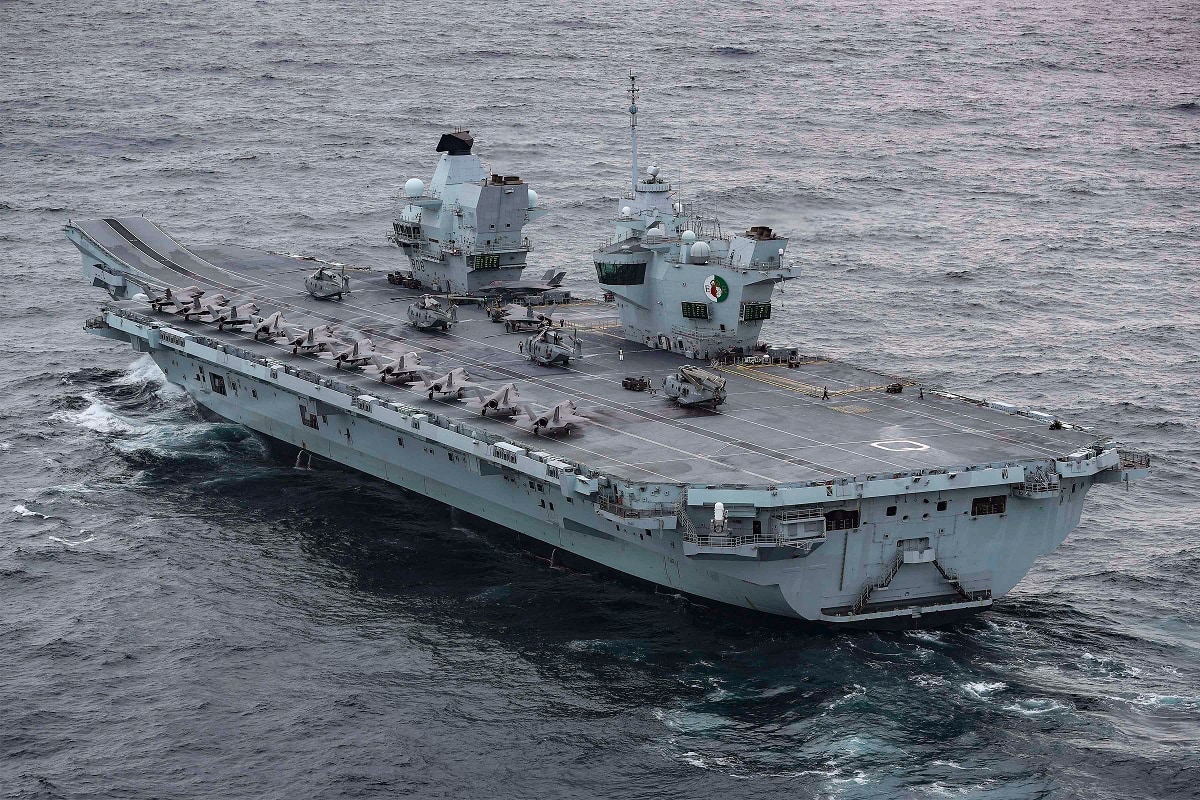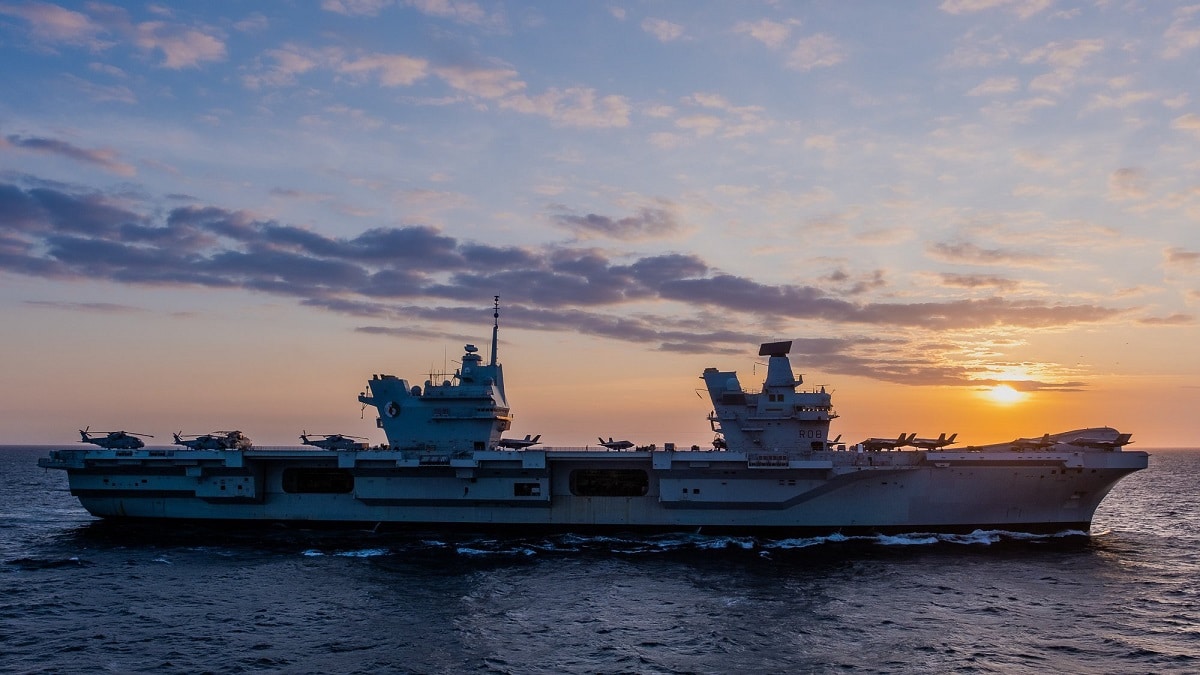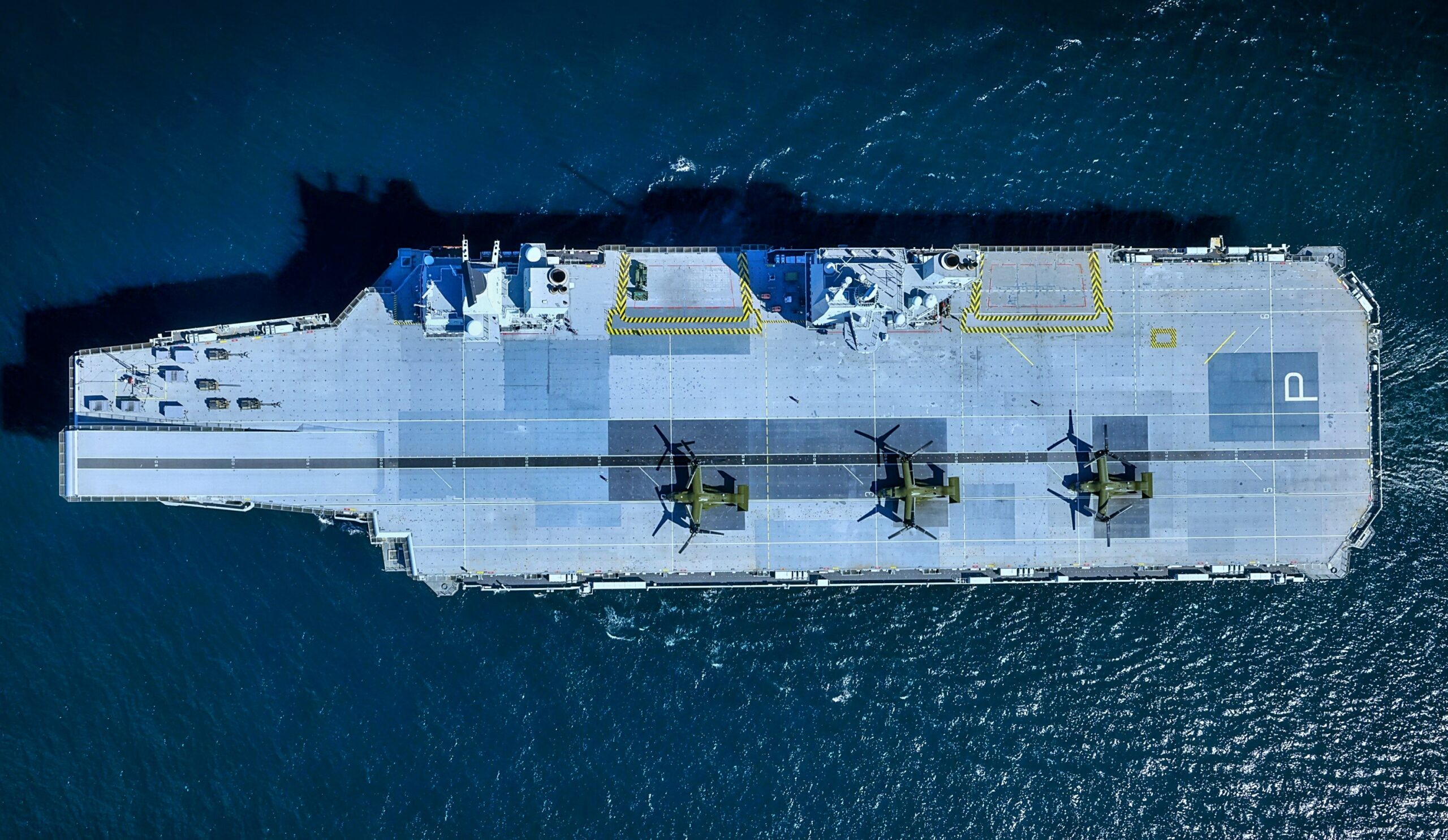Summary and Key Points: The British Royal Navy’s Queen Elizabeth-class aircraft carriers, HMS Queen Elizabeth and HMS Prince of Wales, have encountered significant operational issues despite their advanced capabilities.
-Problems include reliability concerns, notably propulsion failures, and integration difficulties with F-35B fighter jets due to high maintenance costs and limited deck capabilities.
-Critics also highlight insufficient support ships, vulnerabilities in contested environments, and excessive time spent undergoing maintenance.
-Although designed to project UK military power globally, ongoing technical challenges, cost overruns, and lower-than-expected readiness levels raise serious questions about their strategic value and long-term viability within a constrained British defense budget.
The Queen Elizabeth-Class Aircraft Carrier Challenge
Though the British Navy’s carriers should be able to project military might around the globe, they have struggled to conduct basic operations and have been plagued by cost overruns and low readiness levels.
The Royal Navy’s Queen Elizabeth-class aircraft carriers, HMS Queen Elizabeth and HMS Prince of Wales, are, in theory, among the world’s more advanced naval aircraft carriers. Their introduction into service afforded the Royal Navy a significant leap forward in capabilities. However, constant challenges and shortcomings continue to weigh the two-hull class carriers down.
Nonnuclear by Design
Unlike the United States Navy’s aircraft carriers, which have been nuclear-propelled since the USS Enterprise entered service in 1961, the Royal Navy opted for a conventionally powered design. This consideration weighed the advantages of a virtually limitless range against a more complex design.
Planners within the Royal Navy concluded that as the United Kingdom could count on many friendly refueling locations around the globe and that it did not need to project power worldwide like the United States, the lower price point and technical complexity of conventional power was the right decision.
There have been many issues, however.
Problems Galore for Queen Elizabeth-Class
One of the most glaring issues has been reliability. HMS Prince of Wales, the second of the two carriers, suffered a significant propulsion failure in August 2022. A fault in the starboard propeller shaft led to extended repairs, forcing the ship out of service for months.
Integrating the Royal Navy’s F-35B Lightning II jets has also been challenging. Although the aircraft carriers are operational, they do not boast their full complement of F-35s, thanks partly to high operating costs and increased maintenance costs.
In addition, the carrier’s short take-off and vertical landing (STOVL) design limits the carrier’s ability to integrate with other types of aircraft that lack the “jump-jet” capability of the F-35B.
The class has also experienced issues with its deck surface, which has struggled to handle the high heat inherent in F-35B operations.
As a consequence of the carrier’s high costs and costs associated with their F-35B fleets, criticism is frequently directed at the ship’s survivability. Critics have pointed to what they see as a lower-than-optimal number of escort ships like frigates, destroyers, and other air defense assets necessary to build a capable strike group that could survive in a contested maritime environment.
One proposed solution to the carrier’s vulnerability would be to operate in tandem with the United States Navy and other allies in wartime. While this could certainly aid the longevity of the carriers, it severely kneecaps the Royal Navy’s strategic independence.

The full United Kingdom (UK) Carrier Strike Group (CSG) assembled at sea on 04 October, 2020. The (CSG) is led by Her Majesty’s Ship Queen Elizabeth and includes flotilla of destroyers and frigates from the UK, the Netherlands, the USS The Sullivans, and 15 F-35B Lightning II’s from Marine Fighter Attack Squadron 211 and the UK’s 617 Squadron. The Navy-Marine Corps team is humbled and proud to represent the United States and serve alongside our United Kingdom counterparts.
(Royal Navy Photo by LPhot Alker)
Extended maintenance and repair time have also affected both carriers, lowering their operational readiness. Both ships have spent longer than expected at port undergoing repairs than at sea and on patrol. This has raised questions about the utility of the hugely expensive ships, especially when they experience breakdowns and miss commitments to allies.
On paper, the Queen Elizabeth-class carriers are impressive and reflect the Royal Navy’s centuries-long tradition of naval excellence. Plagued by technical issues and engineering problems, however, the class’ ultimate utility — particularly in a contested wartime environment highlights how difficult it is to maintain aircraft carriers and call the carrier’s role in the Royal Navy into question.

HMS Queen Elizabeth. Image: Creative Commons.
While the Queen Elizabeth-class aircraft carriers were intended not only to reflect British engineering and ambition but also to project British military might around the globe, the combination of technical issues and high costs have resulted in a less-than-ideal state of affairs — and calls into question the future utility of the aircraft carriers in the context of a steadily shrinking defense budget, personnel retention, and recruitment issues, and the role of the United Kingdom in the world more broadly.
About the Author: Caleb Larson
Caleb Larson is an American multiformat journalist based in Berlin, Germany. His work covers the intersection of conflict and society, focusing on American foreign policy and European security. He has reported from Germany, Russia, and the United States. Most recently, he covered the war in Ukraine, reporting extensively on the war’s shifting battle lines from Donbas and writing on the war’s civilian and humanitarian toll. Previously, he worked as a Defense Reporter for POLITICO Europe. You can follow his latest work on X.

